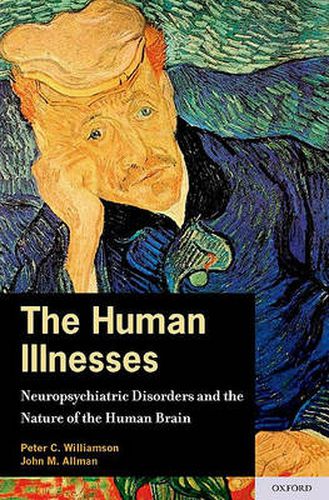Readings Newsletter
Become a Readings Member to make your shopping experience even easier.
Sign in or sign up for free!
You’re not far away from qualifying for FREE standard shipping within Australia
You’ve qualified for FREE standard shipping within Australia
The cart is loading…






The genetic correlates of neuropsychiatric disorders are now known, but none have come close to explaining the great variety of human psychiatric illnesses. This volume, written by a neuropsychiatrist and an evolutionary biologist, offers a new paradigm for understanding these disorders. Proposing that neuronal pathways which underlie neuropsychiatric conditions mirror unique human capabilities, the authors iterate a new paradigm by which to understand human psychiatric illnesses. Human capabilities such as theory of mind, language, and complex social behaviors are explored through their histological, neuroanatomical and functional brain imaging correlates.The capacity for representation, the authors suggest, is central to the understanding of the human brain. Brain structures such as the frontal pole, temporal pole, and fronto-insular cortex are highly developed in humans and are associated with representation. Other brain regions, including the dorsal anterior cingulate cortex, auditory cortex, and hippocampus, are linked with directed effort while the ventral anterior cingulate cortex, orbital frontal cortex, and amygdala are related to emotional encoding. Both networks interact with representional regions and the dorsolateral prefrontal cortex. Conditions like schizophrenia may result, in part, from a failure of the networks associated with directed effort while bipolar disorders may arise from a failure of networks associated with emotional encoding. Similarly, autism may result from a failure of representational brain regions; frontotemporal dementia may be associated with failure of several discrete networks in later life. From this perspective, neuropsychiatric disorders are selective failures of brain networks involved in the integration of cognition, affect and perception. A better understanding of these brain networks will assist psychiatric and mental health researchers in the search for environmental factors and genetic correlates of disorders as well as aid in the development of more effective treatments for these diseases. This volume will be of interest to psychiatrists, neurologists, psychologists, biologists, and imaging scientists–anyone who has ever wondered what makes the human brain human.
$9.00 standard shipping within Australia
FREE standard shipping within Australia for orders over $100.00
Express & International shipping calculated at checkout
The genetic correlates of neuropsychiatric disorders are now known, but none have come close to explaining the great variety of human psychiatric illnesses. This volume, written by a neuropsychiatrist and an evolutionary biologist, offers a new paradigm for understanding these disorders. Proposing that neuronal pathways which underlie neuropsychiatric conditions mirror unique human capabilities, the authors iterate a new paradigm by which to understand human psychiatric illnesses. Human capabilities such as theory of mind, language, and complex social behaviors are explored through their histological, neuroanatomical and functional brain imaging correlates.The capacity for representation, the authors suggest, is central to the understanding of the human brain. Brain structures such as the frontal pole, temporal pole, and fronto-insular cortex are highly developed in humans and are associated with representation. Other brain regions, including the dorsal anterior cingulate cortex, auditory cortex, and hippocampus, are linked with directed effort while the ventral anterior cingulate cortex, orbital frontal cortex, and amygdala are related to emotional encoding. Both networks interact with representional regions and the dorsolateral prefrontal cortex. Conditions like schizophrenia may result, in part, from a failure of the networks associated with directed effort while bipolar disorders may arise from a failure of networks associated with emotional encoding. Similarly, autism may result from a failure of representational brain regions; frontotemporal dementia may be associated with failure of several discrete networks in later life. From this perspective, neuropsychiatric disorders are selective failures of brain networks involved in the integration of cognition, affect and perception. A better understanding of these brain networks will assist psychiatric and mental health researchers in the search for environmental factors and genetic correlates of disorders as well as aid in the development of more effective treatments for these diseases. This volume will be of interest to psychiatrists, neurologists, psychologists, biologists, and imaging scientists–anyone who has ever wondered what makes the human brain human.